A standout bird in an already highly distinctive family.
Meet the Red Warbler:
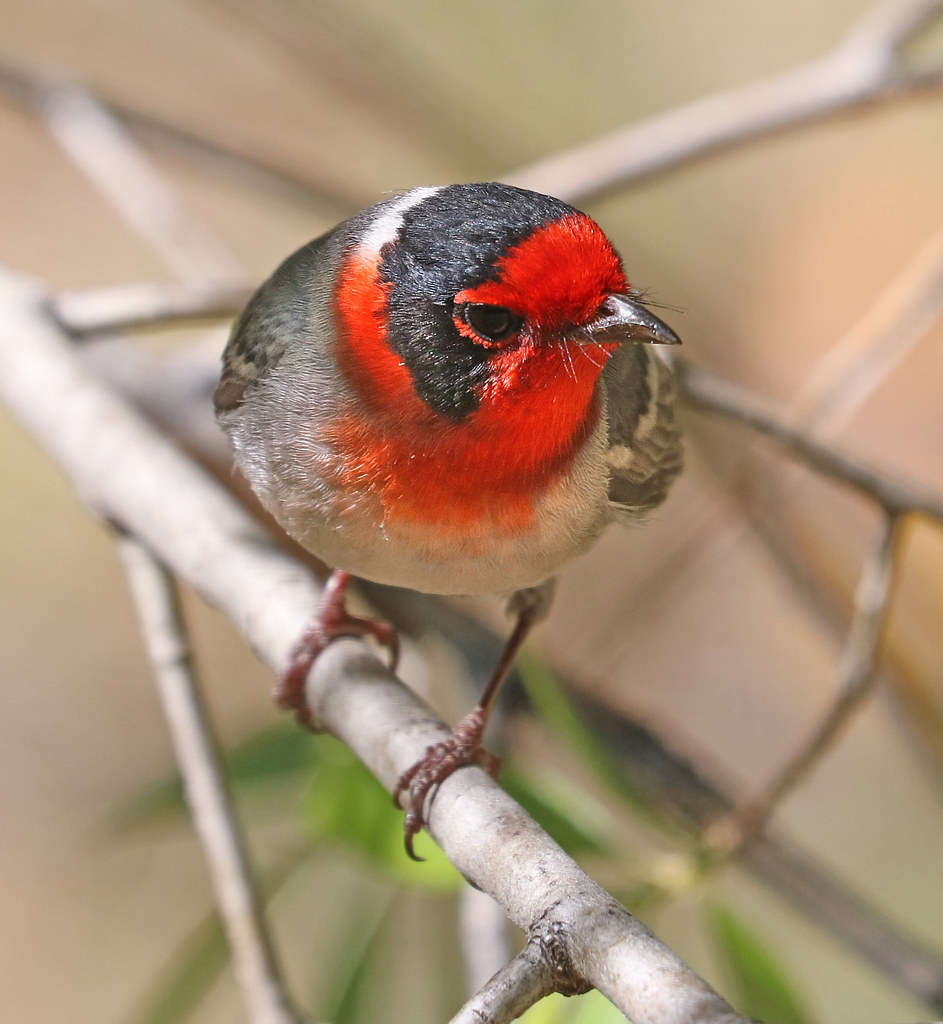 “849 – RED-FACED WARBLER (5-4-2017) near emory pass, mimbres mts, grant co, nm -11” by Sloalan is marked with CC0 1.0.
“849 – RED-FACED WARBLER (5-4-2017) near emory pass, mimbres mts, grant co, nm -11” by Sloalan is marked with CC0 1.0.
Description of the Red Warbler: The Red Warbler (Setophaga graciae), measuring 12.5 to 13.5 cm in length and weighing 7.6 to 8.7 g, boasts bright rose-red plumage that contrasts with the pale auricular patch, varying from white to silvery-white or grey based on the subspecies. Both flight feathers and rectrices are predominantly dark, bordering on blackish, with rose-red edges. Its bill is flesh-colored with a dark tip (sometimes absent), complemented by dark brown eyes encircled by a thin, bare eyering. The legs and feet are pale brownish.
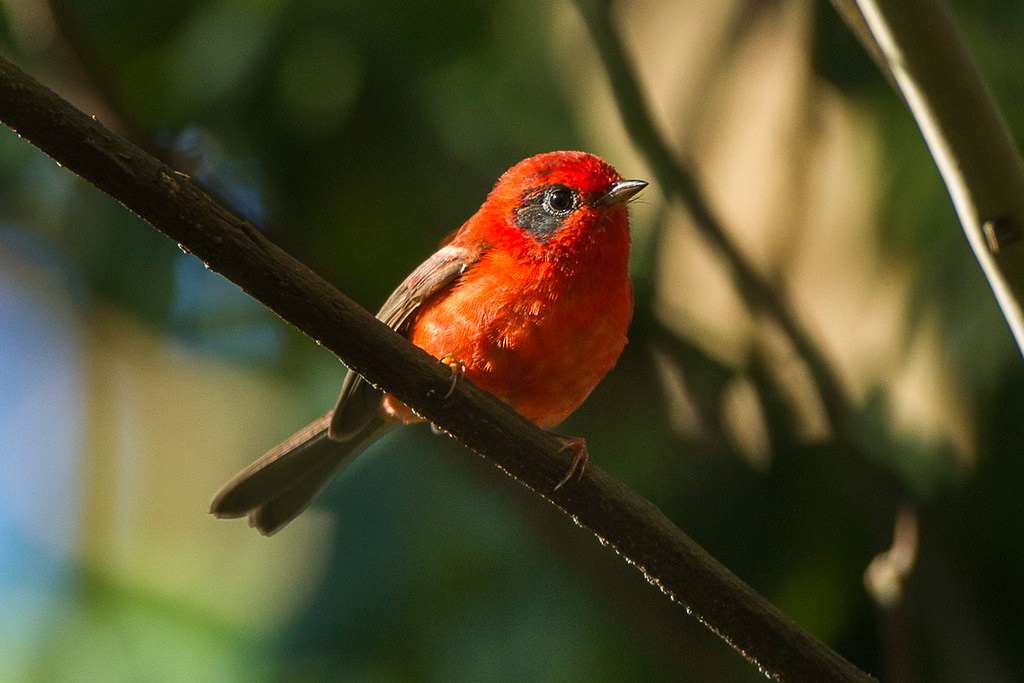
Males and females share similar plumage characteristics, although females tend to have slightly duller plumage.
Juveniles are characterized by mostly pinkish/cinnamon-brown plumage, featuring darker wings and tail with pinkish-cinnamon edges and two paler wingbars. The auricular patch is whitish to greyish, and their bill, legs, and feet are predominantly yellowish-flesh, paler than in adults.
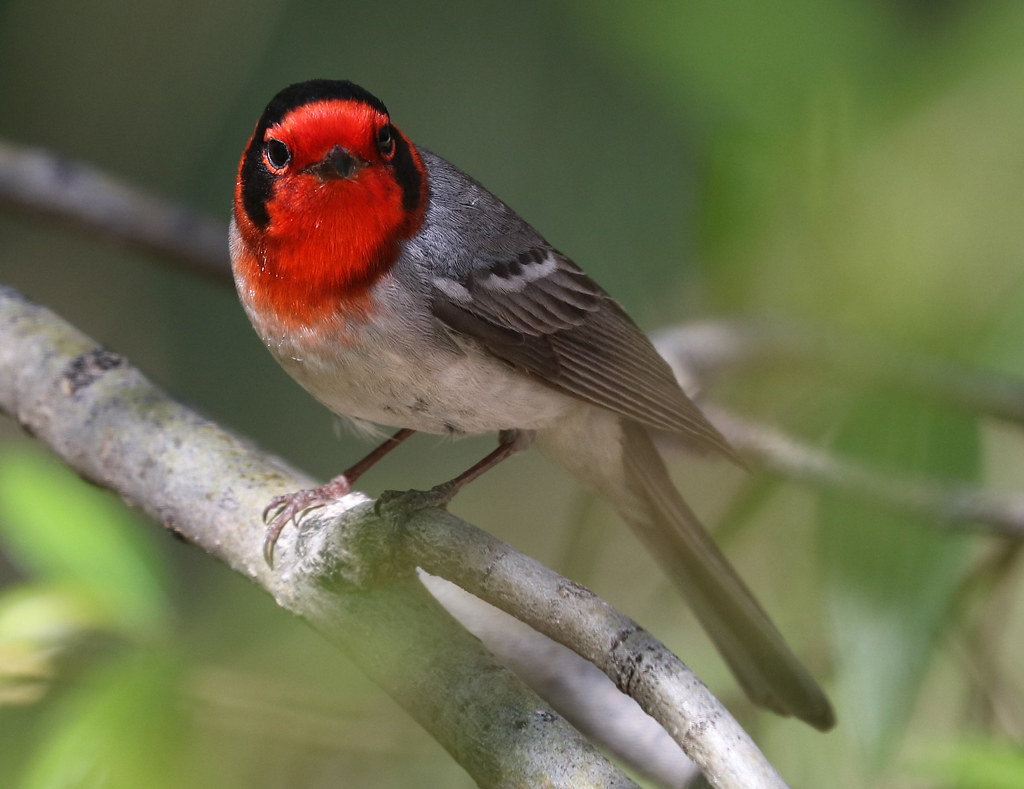
“849 – RED-FACED WARBLER (5-4-2017) near emory pass, mimbres mts, grant co, nm -13” by Sloalan is marked with CC0 1.0.
Grace’s warblers can be found breeding from the southwestern United States down to Nicaragua.
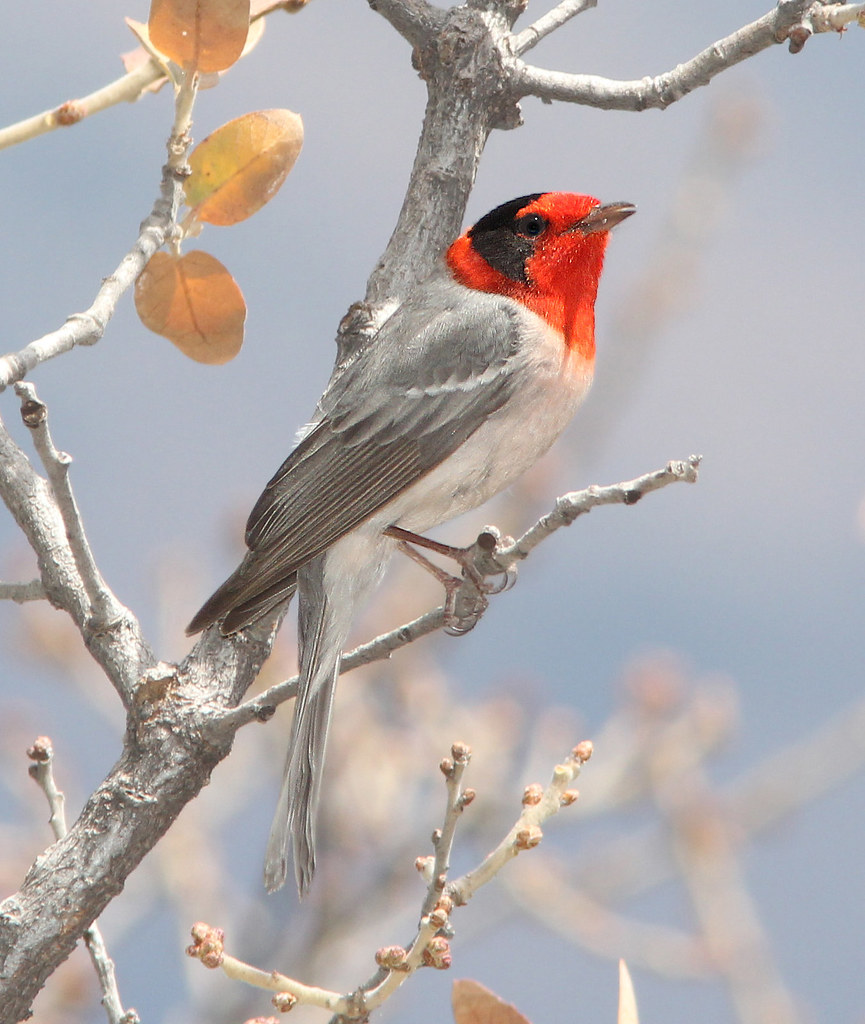
Habitat: During the breeding season, the Red Warbler can be found in humid and semi-humid pine-oak, pine, and fir forests, particularly those with a well-developed understorey. Outside the breeding season, especially in winter, it frequents oak woodlands at higher elevations. The species is observable at elevations ranging from 2,000 to 3,500 meters.
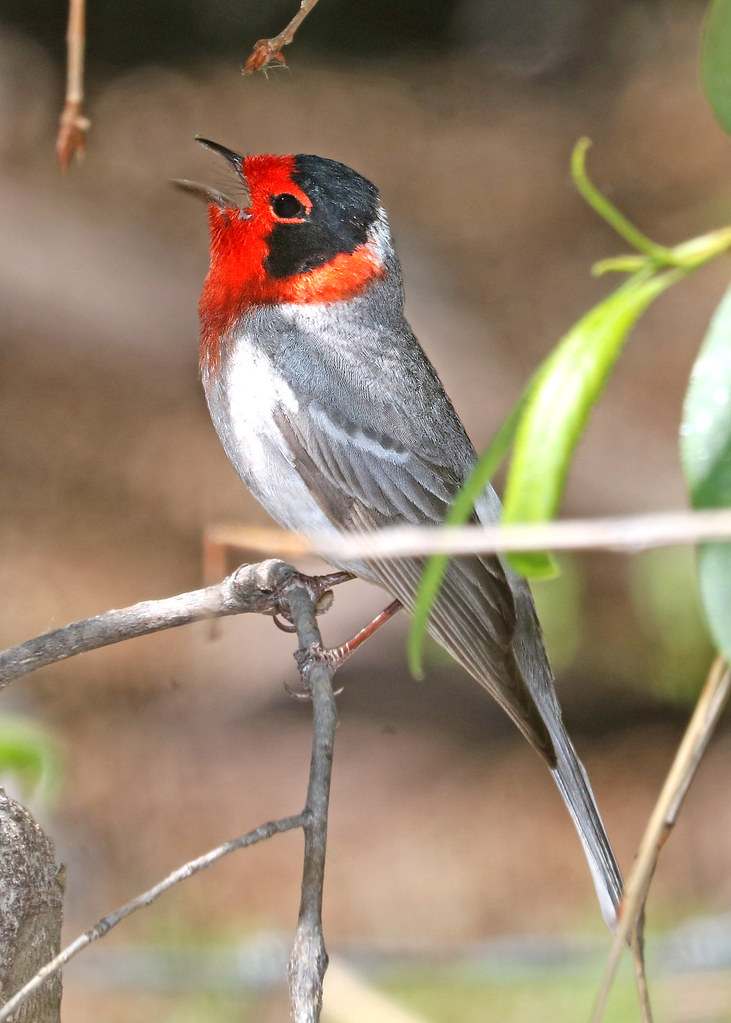
“849 – RED-FACED WARBLER (5-4-2017) near emory pass, mimbres mts, grant co, nm -02 – Copy” by Sloalan is marked with CC0 1.0.
Calls and Songs: The Red Warbler emits a sibilant “shee-ip” sound with a rising terminal syllable. Its repertoire also includes a rather forceful but plaintive “pseet” call. The song is characterized by various warbling trills at different pitches, interspersed with rich warbling notes. It typically consists of a series of three forceful, clear notes followed by a mix of burrs, trills, and chips.
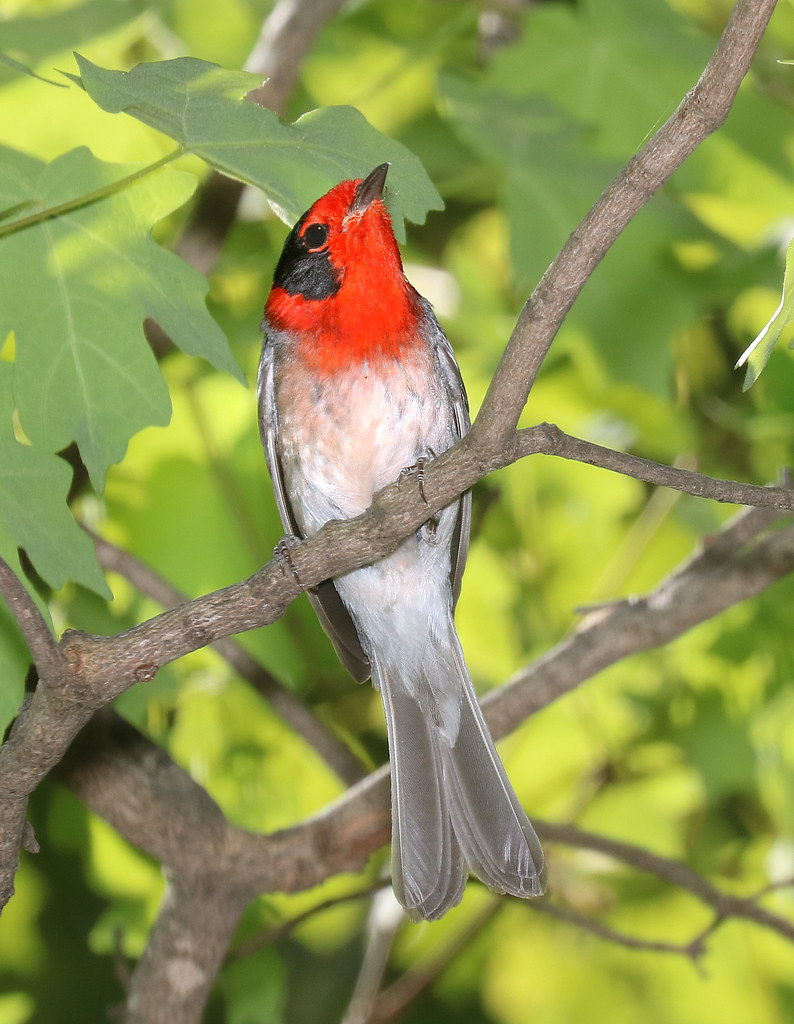
“849 – RED-FACED WARBLER (5-13-2016) ramsey canyon, huachuca mts, cochise co, az -01” by Sloalan is marked with CC0 1.0.
Behavior in the Wild: This insect-eating warbler forages at low to middle levels within shrubby understorey. It waits from exposed perches, allowing insects to pass by before swiftly gleaning them from foliage through flycatching techniques. The Red Warbler is monogamous, and both mates remain together throughout the year.
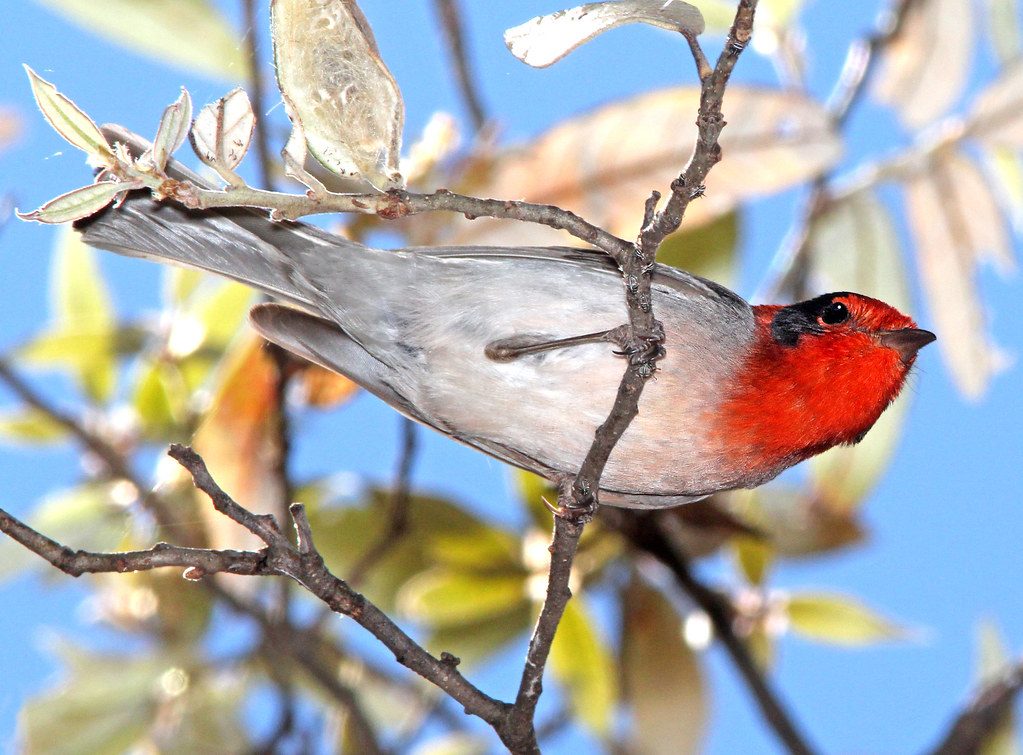
“849 – RED-FACED WARBLER (5-11-13) temporal gulch, santa rita mts, scc, az -03” by Sloalan is marked with CC0 1.0.
Courtship displays involve chasing with short flights and extended chases through vegetation, typically commencing in mid-March. Following these chases, both mates perch closely, with the male singing and the female emitting soft calls. Males may even sing in flight with fanned wings and tail, while some interactions and fights between males have been observed.
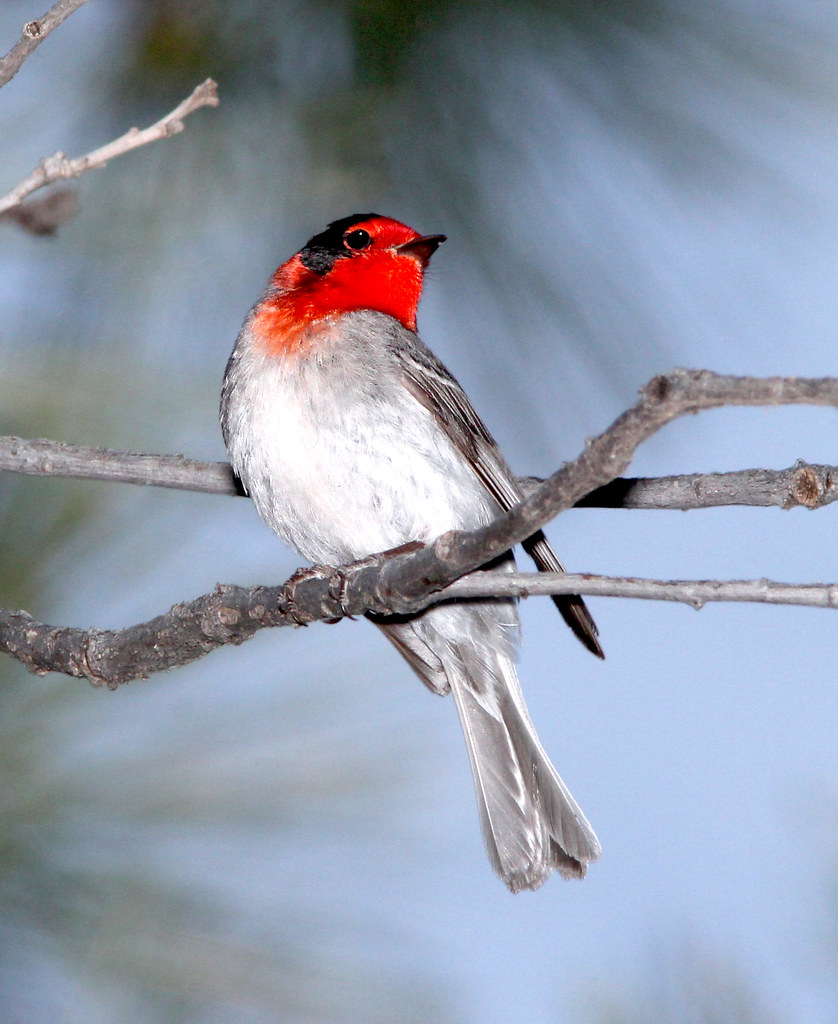
“849 – RED-FACED WARBLER (5-17-13) lower galina campground, gila mts, nm (3)” by Sloalan is marked with CC0 1.0.
Reproduction of This Species: Breeding among Red Warblers occurs in mature conifer forests, primarily along trails and watercourses with brushy edges. Their nesting areas are situated at high elevations, typically above 2,800 meters. Nests are constructed on the ground, often amid dense growth. These nests are described as roofed structures made of woven pine needles and lined with fine grasses, fur, and feathers. The female primarily builds the nest, with the male accompanying her during this period.
Laying occurs from March to May, with nestlings observed until the end of June. The female typically lays 3-4 whitish eggs speckled with brown, grey, and reddish markings. She handles incubation alone for 15-16 days, and the young fledge 10-11 days after hatching. It takes approximately three weeks for the chicks to reach full maturity. Both parents contribute to feeding the chicks.

“849 – RED-FACED WARBLER (5-11-13) temporal gulch, santa rita mts, scc, az -05” by Sloalan is marked with CC0 1.0.
Protection/Threats/Status: The Red Warbler faces potential threats from nest predators such as rodents, raccoons, feral cats, and snakes. Although its population is slowly declining, it is currently considered fairly common to common. Habitat destruction and logging may contribute to this decline by increasing open areas. With a population size estimated within the range of 50,000 to 499,999 mature individuals, the Red Warbler is classified as “Least Concern” and is not globally threatened.

“849 – RED-FACED WARBLER (5-4-2017) near emory pass, mimbres mts, grant co, nm -05” by Sloalan is marked with CC0 1.0.
Listen to this bird next:




